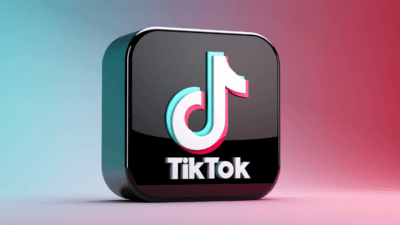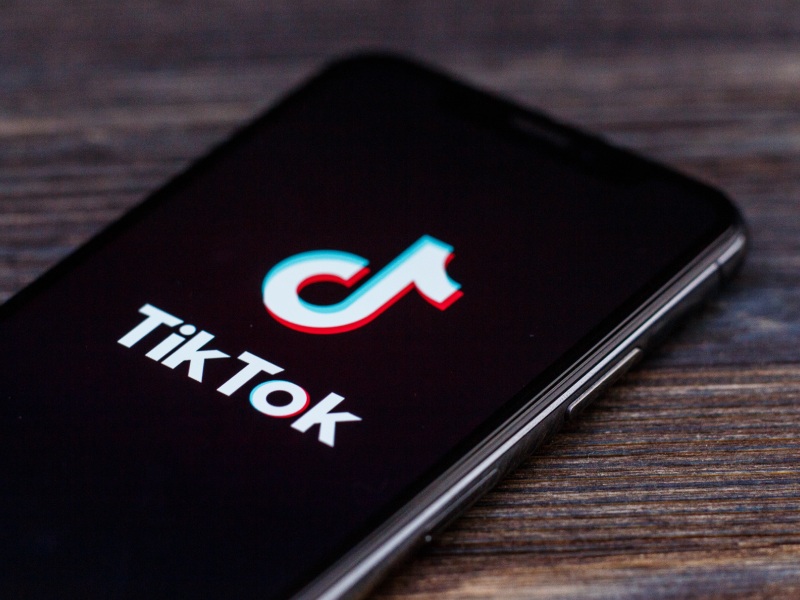The Chinese social media platform TikTok has exploded since it emerged on the scene in late 2016. After it became available worldwide in 2018, the video-sharing network rapidly gained popularity. In 2019, TikTok brought in between $200-300 million USD globally and by October 2020, the app surpassed two billion mobile downloads—making it the seventh most downloaded app of the decade. In 2020, the company aims to generate $500 million in revenue from the U.S. alone.
While the platform started with, and still largely consists of, lip-synced songs, dances, memes and funny videos, TikTok has launched numerous viral trends and Internet music celebrities, as well as received blowback for other uses such as conspiracy theories and political shenanigans.
Its incredible momentum, however, presents a host of opportunities for digital publishers, including strategies to increase and engage audiences as well as monetise and earn revenue through TikTok.
The numbers
Let’s take a look at TikTok’s user numbers, compared to other social media sites.
- As of April 2020, TikTok had 45.5 million monthly users in the U.S.
- Facebook at 223 million.
- Snapchat had 88 million.
- Twitter had 33 million.
These figures indicate that especially considering TikTok’s infancy compared to the other sites, it is growing at a wild pace that is rapidly approaching the social media giants.
Advertising opportunities for publishers
Advertising on TikTok is also growing. Marketers can buy ad products such as sponsored hashtag challenges that ask users to post videos related to a particular brand. An example of this is Chipotle, which ran a hashtag challenge for National Avocado Day.
The #GuacDance challenge, in which viewers uploaded their dance videos dedicated to avocados, received 250,000 video submissions and resulted in 430 million video starts over six days. It resulted in Chipotle’s biggest guacamole day ever, with more than 800,000 served, and was TikTok’s highest-performing branded challenge in the U.S.
This demonstrates the viral power of TikTok, and challenges such as this are a key driver of this viral growth.
Live-streaming is also a major marketing opportunity on the platform, and sales from such events have already become a phenomenon in China. According to The Information, James Liang, founder of Trip.com, reportedly sold 10 million yuan worth of travel packages in the first hour of a live-streaming session in March 2020. The founder of smartphone company Smartisan sold 110 million yuan worth of products such as food and lifestyle products to more than 40 million viewers in the first three hours of a session in April.
Another key part of TikTok’s advertising push is its platform for self-serve ads, which is currently only available in India, with other parts of the world in invitation-only beta testing. However, advertisers can buy ad space through TikTok’s salesforce if they don’t have access to the self-service platform, and TikTok is expected to open self-serve ads across the globe soon.
Case Study: The Washington Post
If there was ever a question of whether TikTok has gone mainstream to be taken seriously, just look to The Washington Post.
“TikTok is journalism in every sense,” says Dave Jorgenson, producer and writer of creative video at the Post. With roughly half of all TikToks being news-related, Jorgenson told Pierre de Villiers of What’s New in Publishing that the Post is delivering news to its users through the platform.
“That’s what journalism is,” he says. “Delivering news however you are able to in a responsible way.”
The Washington Post launched its TikTok channel in 2019, and a year later had amassed nearly 650,000 followers. The tone for the platform is one that is both humorous and self-deprecating, showing behind-the-scenes footage with Post reporters and staff in a transparent way.
This tone and authenticity are vital. TikTok consists largely of a younger audience that the Post wants to reach, and those digital natives instantly know when something is not authentic.
“TikTok, for the most part, rewards genuine people,” says Jorgenson, who adopted a “dad-joke” persona for the channel.
The Post’s very first TikTok was a comedic look at staff members trying to figure it out and being clueless as to how the app works. Subsequent ones displayed things such as a funny Covid handshake and spoofs on the U.S. Presidential debates.
But the casual approach doesn’t mean that the Post TikTok channel doesn’t tackle serious journalism stories. It has also been used to educate followers about the Black Lives Matter movement and COVID-19, to name just a couple.
The approach is to use TikTok as an entertaining gateway to capture the user’s attention and then link to a Washington Post article in the caption or comments. User Comments on the Post’s TikToks indicate that people are starting to view it as a valuable news source and converting to website visitors.
Jorgenson says the platform is a long-play strategy. They don’t expect a teenage viewer to become a newspaper subscriber, but rather view it as an avenue of awareness for a younger audience of potential future readers to become familiar with the Post. One of the biggest benefits has been that TikTok has increased the trust between the brand and its followers.
“I don’t expect a 14-year-old to get a newspaper subscription but I do hope they are starting to inform themselves and become literate in media,” Jorgenson says.
Other ways publishers are making money
NBC, Group Nine, The BBC and ESPN have all been experimenting on the platform over the last year as a way to reach younger audiences, reports Thomas Goss on the MobiLoud blog. TikTok has set up a content partnership team to work directly with publishers to grow their audiences and soon plans to shift some of its focus to helping publishers monetize through branded content.
In addition, Tiktok has opened up its Creator Marketplace to publishers as well as influencers, which allows them to work directly with marketers on branded content initiatives. Publishers receive weekly insight reports that provide up-to-date information on trending hashtags and best practices.
Looking at it from an ROI perspective, some publishers consider it to be too time and resource-intensive to create the kind of videos that would go viral and potentially be revenue or audience building. Complex, however, doesn’t look at it that way. The community of creators and curators takes old videos and breathes new life into them, repurposing previously used video footage into TikTok content.
Safety and privacy issues
Concerns over data privacy, particularly when it comes to China, have come to the discussion about TikTok.
“The rise of TikTok has recently kicked off a debate among journalists and publishers about the safety and ethics of using and promoting the platform without giving adequate weight to the myriad of ways it might ultimately be compromised,” writes Emily Bell at the Columbia Journalism Review.
U.S. President Donald Trump issued an executive order prohibiting transactions with TikTok’s owner, ByteDance, and his administration has said it will take strong action against the “information warfare,” perhaps going as far as banning the app. The Indian government has already banned TikTok, along with 58 other Chinese apps.
A lasting trend
Regardless of its issues, TikTok is clearly a rising phenomenon and one that poses a threat to the other social media giants. In 2018, Facebook launched its version of TikTok with an app called Lasso. Though Lasso was unsuccessful and eventually closed down, the user behavioural data collected from the experiment can be used to develop new products, such as Reels, a TikTok challenger unveiled in August 2020 by Facebook-owned Instagram.
Case Study: The New York Times
Taylor Lorenz, a technology reporter for The New York Times, not only writes about TikTok but is also very involved with the Times’ channel. She is clearly a believer in the power of the channel, particularly in the music genre. In August she tweeted, “TikTok is the most important thing in music right now.”
This seems to be backed up by the users themselves — in response to a potential Trump administration ban, TikTok’s top music stars and fans are rallying to #SaveTikTok. The hashtag has more than 230 million views. Michael Le, one of the biggest influencers on the app with 34 million followers, posted a video that has garnered nine million views and a half-million comments.
Lorenz doesn’t think much of Instagram Reels. “It looks exactly like TikTok with literally none of the features,” she said in an interview at The Verge. “It’s the most delusional product I’ve ever seen. It doesn’t have anything that makes TikTok compelling.”
Like The Washington Post, The New York Times is a legacy newspaper publisher using TikTok to reach a younger audience. But one of the biggest lessons the company reports learning from the platform is that it’s all about the data. The strategy isn’t necessarily to convert TikTok followers and viewers to subscribers, but rather to create awareness and to collect important data about those users and their behaviour, to inform a new generation of potential audience members.
Conclusion
Revenue streams from TikTok are clearly still in the infancy stage — but digital publishers would do well to keep an eye on the platform and perhaps test the waters. So far, it has shown exponential growth and resonation with young audiences, and the possibilities for advertising opportunities and monetisation are just beginning.












